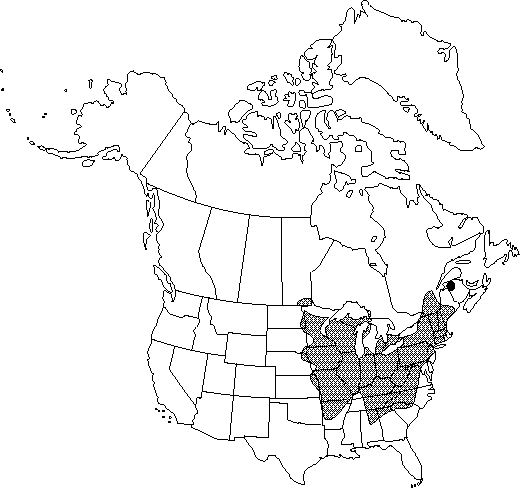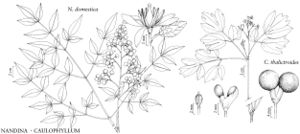Caulophyllum thalictroides
Fl. Bor.-Amer. 1: 204. 1803.
Stems 2-9 dm. Leaves: 1st leaf (3-)4-ternate; 2d leaf (2-)3-ternate; leaflets 3-8 × 2-10 cm. Inflorescences with 5-70 flowers. Flowers: bracteoles 1-3 mm; sepals yellow, purple, green, 3-6 2-3 mm, apically revolute; petals 1-2.5 mm; stamen filaments 0.5-1.5 mm; pistil 1-3 mm; style 0.25-1 mm. 2n = 16.
Phenology: Flowering late spring.
Habitat: Mesophytic forests
Elevation: 0-1200 m
Distribution

Man., N.B., Ont., Que., Ala., Ark., Conn., Del., D.C., Ga., Ill., Ind., Iowa, Kans., Ky., Maine, Md., Mass., Mich., Minn., Mo., Nebr., N.H., N.J., N.Y., N.C., N.Dak., Ohio, Pa., S.C., S.Dak., Tenn., Vt., Va., W.Va., Wis.
Discussion
Native Americans used various preparations of the root of Caulophyllum thalictroides medicinally to treat rheumatism, toothaches, profuse menstruation, indigestion and stomach cramps, fits and hysterics, genito-urinary disfunction, gallstones, and fever, as an aid in childbirth, and as a general tonic (D. E. Moermann 1986).
Selected References
None.
